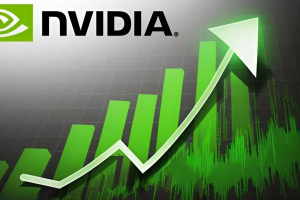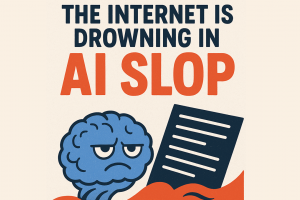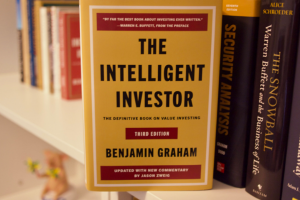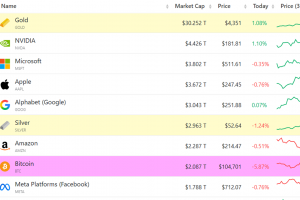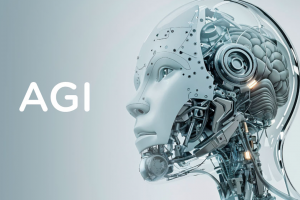2025’s Nobel Prize in Physics was awarded to John Clarke, Michel Devoret, and John Martinis for revealing macroscopic quantum tunneling and energy quantization in superconducting circuits. Their work crossed the boundary between the strange quantum realm and devices you can hold. This isn’t sci-fi — it underpins future quantum computers, sensors, and encryption. Dive in with me: I’ll break down what they did, why it matters today, and how it could shape your tech-driven future. Drop your thoughts and let’s explore together.
1. Why This Nobel Prize Is a Big Deal
Every year, when the Nobel Prize in Physics is announced, media reports highlight the laureates and the broad slogans: “for uncovering quantum phenomena,” or “for breakthroughs enabling future quantum tech.” But what makes the 2025 award especially compelling is how it bridges theory and real possibility.
The 2025 Nobel went to John Clarke, Michel Devoret, and John M. Martinis for demonstrating macroscopic quantum mechanical tunneling and energy quantization in an electric circuit.
Why “macroscopic”? Because quantum effects are usually seen in electrons, photons, or atomic-scale systems. Making them visible in circuits large enough to hold — with many electrons cooperating — is transformative.
The Nobel committee noted that this work “revealed quantum physics in action,” and emphasized that it provides opportunities for quantum cryptography, quantum computers, and quantum sensors
In short: this is not just a proof-of-concept for scientists. It points toward the next era of technology — where devices don’t merely use classical electronics, but harness quantum behavior for far greater power.
But to appreciate why it’s so exciting, let me take you through the science — in a digestible way.
2. A Gentle Walk Through the Science
2.1 Basic ingredients: superconductors, Josephson junctions, and circuits
A superconductor is a material that, at ultra-low temperatures, conducts electricity with zero resistance. Electrons form “Cooper pairs,” and the system behaves as a macroscopic quantum wave.
A Josephson junction is the configuration where two superconductors are separated by a thin insulating barrier. Electrons (Cooper pairs) can “tunnel” across the barrier — a fundamentally quantum effect.
Many quantum-circuit experiments are built from superconducting loops, capacitors, inductors, and Josephson junctions — creating artificial atoms or “qubits” — the building blocks of quantum processors.
What Clarke, Devoret, and Martinis did was to design circuits so that the collective state of many electrons in a superconducting circuit would behave quantum-mechanically: having discrete energy levels and being able to tunnel between states. That is, the circuit itself acts like a quantum object.
2.2 Energy quantization & tunneling in circuits
In an atom, electrons exist in quantized energy levels — they can’t have “in-between” energies. Similarly, in a quantum circuit, the electromagnetic degree(s) of freedom (e.g. current or voltage modes) can have discrete energy levels under the right conditions.
Even more intriguingly: they showed macroscopic quantum tunneling — the circuit jumping between states by tunneling through a potential barrier (rather than going over it). That’s analogous to a particle tunneling through a barrier at the atomic level, but now in a circuit you can physically see and manipulate.
These experiments required cooling to milikelvin temperatures, ultra-low noise, and careful engineering to isolate the circuit from decoherence (noisy interactions with the environment). But their success proved that quantum rules can scale up — not just for single particles, but for engineered systems.
2.3 Why it wasn’t trivial
Quantum states are fragile. Coupling to the environment (vibrations, thermal noise, electromagnetic fluctuations) tends to destroy coherence.
Scaling quantum phenomena from tiny systems (single atoms or photons) to circuits with many electrons is extremely challenging.
Demonstrating discrete energy levels and coherent tunneling in a circuit meant you needed exquisite sensitivity and measurement strategies.
Thus, their experiments did more than confirm theory: they pushed the frontier of control and measurement in quantum systems.
3. Real-World Impact: From Lab to Devices
The glory of fundamental physics lies in revealing nature’s rules. But the real magic — the spark that captures public imagination — comes when those rules become tools. Here’s how this Nobel-winning science connects to tomorrow’s tech.
3.1 Quantum Computing
Quantum computers exploit superposition, entanglement, and tunneling to perform computations that classical computers can’t (or would take infeasible time). But building a practical quantum computer requires scalable, controllable, low-noise quantum bits (qubits).
The work of Clarke, Devoret, and Martinis contributes to the engineering fundamentals: making circuits behave quantum mechanically, isolating them, and reading quantum states. In particular:
Their techniques help in designing superconducting qubits — one of the leading platforms in quantum computing today.
Discrete energy levels and controlled transitions (gates) are central to manipulating qubits reliably.
Understanding and controlling tunneling mechanisms is crucial for error correction, coherence times, and stability.
3.2 Quantum Sensing & Metrology
Quantum systems, when properly controlled, can act as extremely sensitive detectors of magnetic fields, electric fields, gravitational gradients, acceleration, etc.
Because these circuits can reveal quantum behavior at macroscopic scales, they may lead to:
Ultra-precise magnetometers (for medical imaging, geophysics).
Sensors for gravitational waves or dark matter detection.
Devices that measure fundamental constants or perform timekeeping with quantum precision.
3.3 Secure Communication & Quantum Cryptography
Modern encryption relies on classical cryptography (RSA, ECC). But quantum cryptography — notably quantum key distribution (QKD) — promises theoretically unbreakable security. To make this practical, hardware that processes and detects quantum signals is essential. The deeper quantum circuit expertise from this Nobel work helps pave the infrastructure for secure quantum networks.
3.4 Everyday Technology Roots in Quantum
It’s a myth that quantum is “abstract and distant.” Even today’s electronics rely on quantum principles:
Transistors, semiconductors, LEDs — quantum mechanics is at their heart.
The Nobel press release notes that “the transistors in computer microchips are one example of the established quantum technology that surrounds us.”
Quantum dots, photon detectors, superconducting circuits — many are already in niche applications.
Thus, the 2025 Nobel is part of a continuum: quantum science has long shaped modern tech, and now we’re pushing it into new realms.
When Quantum Weirdness Hits Reality: How the 2025 Physics Nobel Will Change Our World
What if I told you that in a cooled circuit — under whispers of temperature near absolute zero — engineers saw electrons act like they’re ghosts, vanishing and reappearing through barriers like magic? In 2025, three physicists received the Nobel Prize for doing exactly that — turning quantum strangeness into tangible circuits. And this breakthrough is not a curiosity: it might be the foundation of tomorrow’s computers, sensors, encryption — maybe even how we measure the universe. Join me on a journey through the science, the impact, and the future — and let’s explore together.
The experiment that rewrote boundaries
In classical physics, objects are supposed to follow deterministic paths. But in quantum mechanics, bizarre things happen: particles can exist in superposition, tunnel through barriers, and only collapse to a definite state when observed. Historically, these phenomena were confined to electrons, photons, or atoms — tiny systems.
What Clarke, Devoret & Martinis managed was to bring that quantum behavior into a system of many electrons — a superconducting circuit — showing discrete energy levels and quantum tunneling. That means the whole circuit behaves like a quantum object.
They cooled the circuit to millikelvin temperatures to prevent thermal noise. They engineered the Josephson junctions and capacitive/inductive components so that the quantum potential landscape had barriers for tunneling. Then they probed and detected transitions between states with ultra-sensitive measurement tools. The result: the circuit would tunnel between states, just like a quantum particle does — but now at a macroscopic scale.
Why scaling quantum matters
You might ask: isn’t quantum already used in labs? Yes. But lab-scale demonstrations are delicate and small. Scaling quantum into circuits that can be manufactured, integrated, controlled, and read repeatedly — that’s how we make quantum tech scalable and robust.
This Nobel work gives us a blueprint for bridging that gap. It opens up possibilities to build better qubits, longer coherence, lower error, and more control over quantum devices.
Where this touches you
Quantum computers: For optimization, cryptography, material simulation, drug discovery — tasks that classical computers struggle with.
Sensors: Medical imaging, geology, navigation, gravitational wave detection.
Secure communications: Quantum key distribution ensures that eavesdroppers cannot intercept without detection.
Metrology & standards: Redefining units via quantum standards, enabling more precise measurements.
We may be years away from ubiquitous quantum computers, but every leap — especially one awarded by Nobel — accelerates the path.
Legacy & inspiration
Imagine being a PhD student or postdoc in the 1980s, chasing exotic superconducting circuits. The challenges were enormous: materials, stability, measurement. Yet Clarke, Devoret, and Martinis pushed forward. Today, their legacy sends a message: boundary-pushing science matters, even when its fruit lies decades ahead.
For young technologists, entrepreneurs, engineers: this tells us that investing in fundamental science can yield transformative tech. The dialog between theory, experiment, and engineering is where breakthroughs live.
I want to hear from you:
What’s your biggest “wow” moment reading this?
Do you think quantum computers will be widespread in your lifetime?
What application would you want most — encryption, sensing, simulation?
Tag a friend who geeks out over quantum physics or tech. Share this post if it stirred something in you — and let’s bring more people into the wonder.











